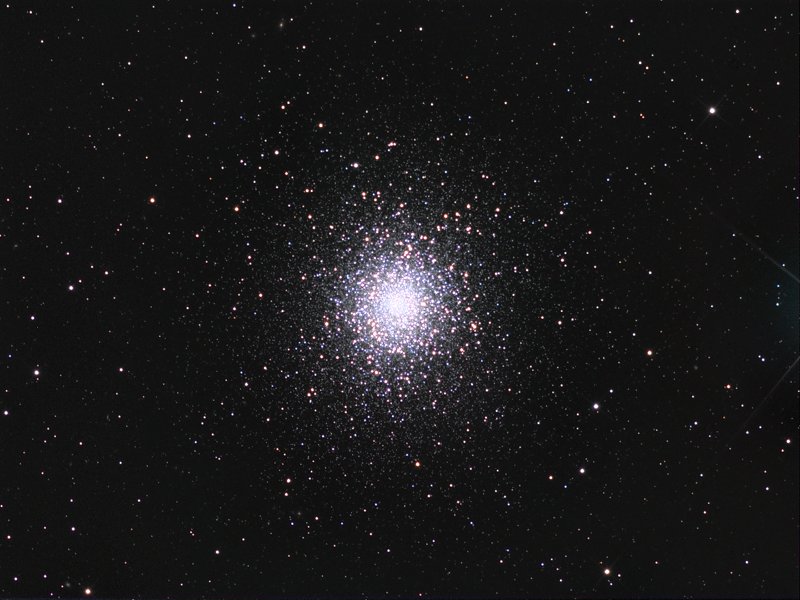

Globular Cluster M5

M5 ( also desiganted as NGC5904 ) is a globular cluster in the constellation Serpens. It was discovered by Gottfried Kirch in 1702.
M5 is, under extremely good conditions, just visible to the naked eye as a faint "star" near the star 5 Serpentis. Binoculars or small telescopes will identify the object as non-stellar while larger telescopes will show some individual stars, of which the brightest are of apparent magnitude 12.2.
Charles Messier also noted it in 1764, but thought it a nebula without any stars associated with it. William Herschel was the first to resolve individual stars in the cluster in 1791, counting roughly 200.
Spanning 165 light-years in diameter, M5 is one of the larger globular clusters known. The gravitational sphere of influence of M5, (i.e. the volume of space in which stars are gravitationally bound to it rather than being torn away by the Milky Way's gravitational pull) has a radius of some 200 light-years.
At 13 billion years old it, M5 is also one of the older globulars associated with the Milky Way Galaxy. Its distance is about 24,500 light-years from Earth and the cluster contains more than 100,000 stars, as many as 500,000 according to some estimates.
Photo Details
 Telescope: Celestron C8N (1000mm)
Telescope: Celestron C8N (1000mm)
 Camera: Sbig ST-2000XM, Filter wheel, Baader 1.25" LRGB filtes
Camera: Sbig ST-2000XM, Filter wheel, Baader 1.25" LRGB filtes
 Mount: NJP Takahashi
Mount: NJP Takahashi
 Guiding: Self-guided
Guiding: Self-guided
 Exposure: LRGB 3h
Exposure: LRGB 3h
 When: ----
When: ----
 Other information: good transparency, good seeing
Other information: good transparency, good seeing